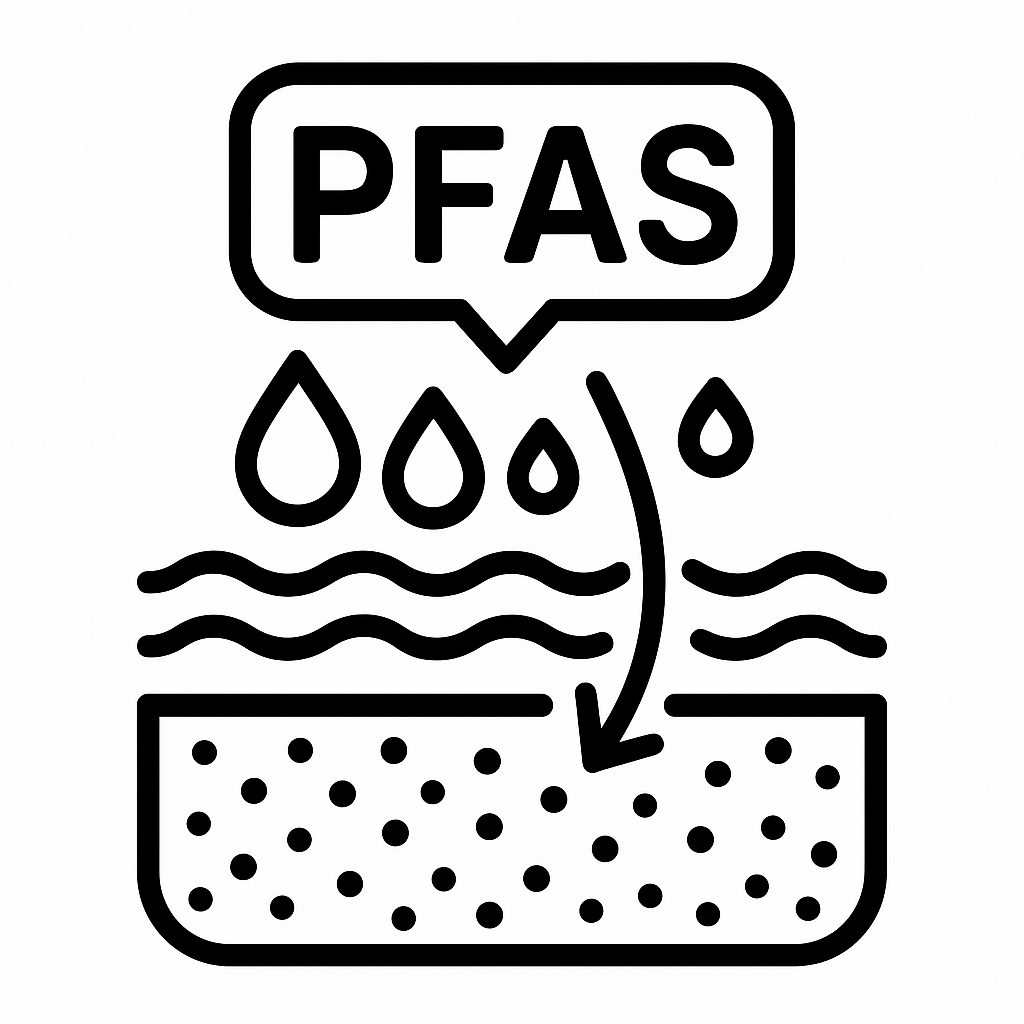Per- and polyfluoroalkyl substances (PFAS) exhibit unique behaviors during soil washing processes, influenced by their chemical properties and soil characteristics.

PFAS Characteristics and Soil Interaction:
- PFAS compounds are both hydrophobic (water-repelling) and lipophobic (fat-repelling), leading to complex interactions with soil components.
- The length of the carbon-fluorine chain in PFAS molecules affects their behavior. Longer-chain PFAS tend to adhere more strongly to soil particles, especially those rich in organic matter, due to increased hydrophobic interactions. Conversely, shorter-chain PFAS are less likely to bind tightly and are more prone to remain in the liquid phase during soil washing.
- When addressing PFAS-contaminated soils, soil washing can serve as a remediation strategy with specific objectives and challenges.
Challenges when washing PFAS
Objective:
Soil washing, in the context of PFAS contamination, will either be used to concentrate the contaminated soil into a smaller volume, or to transfer them into the washing water (source). This approach facilitates more efficient and cost-effective subsequent treatment or disposal. By isolating the PFAS-laden soil fraction, the overall volume requiring specialized handling is reduced, thereby optimizing resource utilization.
Behaviour:
During the soil washing process, PFAS compounds can partition into the process water, leading to secondary contamination. This necessitates effective management strategies to address the contaminated effluent.
Mitigation Strategies
To manage PFAS-contaminated process water resulting from soil washing, several treatment technologies can be employed:
- Granular Activated Carbon (GAC) to absorb PFAS in the process water (example).
- Ion exchange resins that can capture PFAS ions from the water (alternative or complementary to GAC).
- Foam fractionation technique that leverages the surfactant properties of PFAS, making use of air bubbles to concentrate PFAS.
- Advance Oxidation Processes (AOPs) to generate reactive species that can degrade PFAS molecules.
Implementing these strategies requires careful consideration of the specific PFAS compounds present, the characteristics of the process water, and the desired treatment outcomes. Combining multiple treatment methods may enhance overall effectiveness, ensuring that both the soil and water components of the remediation process are addressed comprehensively.
